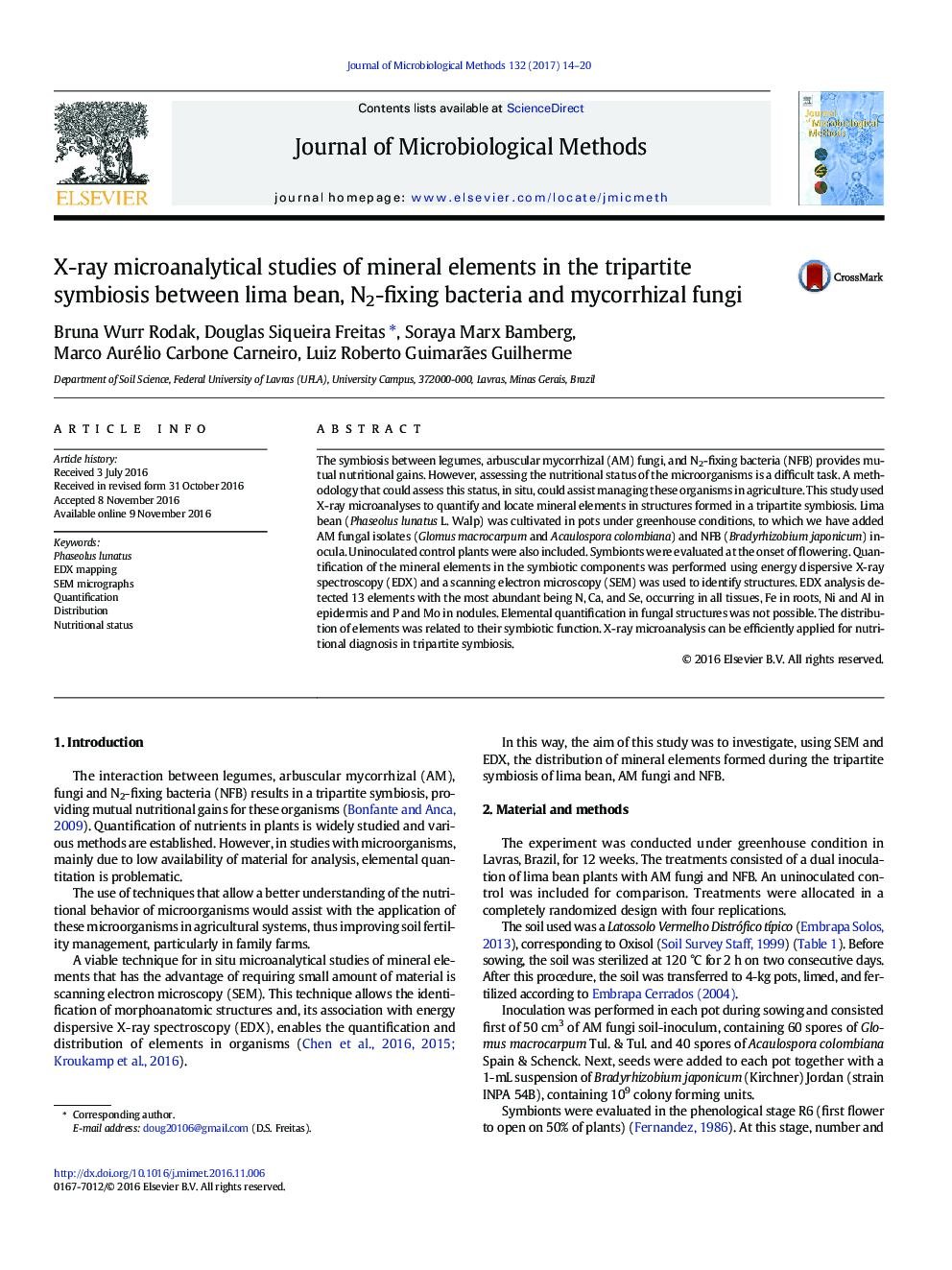| کد مقاله | کد نشریه | سال انتشار | مقاله انگلیسی | نسخه تمام متن |
|---|---|---|---|---|
| 5522324 | 1545911 | 2017 | 7 صفحه PDF | دانلود رایگان |

- X-ray microanalysis was effective for elemental analysis in tripartite symbiosis.
- Thirteen elements were detected and their distribution relates to their function.
- N, Ca, Se, Fe, and P were found mainly in symbiotic tissues.
- N, Ca, Se, P, and Mo were found mainly in nodules.
- N, Al, Fe, Ca, and Se were found mainly in lima bean root.
The symbiosis between legumes, arbuscular mycorrhizal (AM) fungi, and N2-fixing bacteria (NFB) provides mutual nutritional gains. However, assessing the nutritional status of the microorganisms is a difficult task. A methodology that could assess this status, in situ, could assist managing these organisms in agriculture. This study used X-ray microanalyses to quantify and locate mineral elements in structures formed in a tripartite symbiosis. Lima bean (Phaseolus lunatus L. Walp) was cultivated in pots under greenhouse conditions, to which we have added AM fungal isolates (Glomus macrocarpum and Acaulospora colombiana) and NFB (Bradyrhizobium japonicum) inocula. Uninoculated control plants were also included. Symbionts were evaluated at the onset of flowering. Quantification of the mineral elements in the symbiotic components was performed using energy dispersive X-ray spectroscopy (EDX) and a scanning electron microscopy (SEM) was used to identify structures. EDX analysis detected 13 elements with the most abundant being N, Ca, and Se, occurring in all tissues, Fe in roots, Ni and Al in epidermis and P and Mo in nodules. Elemental quantification in fungal structures was not possible. The distribution of elements was related to their symbiotic function. X-ray microanalysis can be efficiently applied for nutritional diagnosis in tripartite symbiosis.
Journal: Journal of Microbiological Methods - Volume 132, January 2017, Pages 14-20